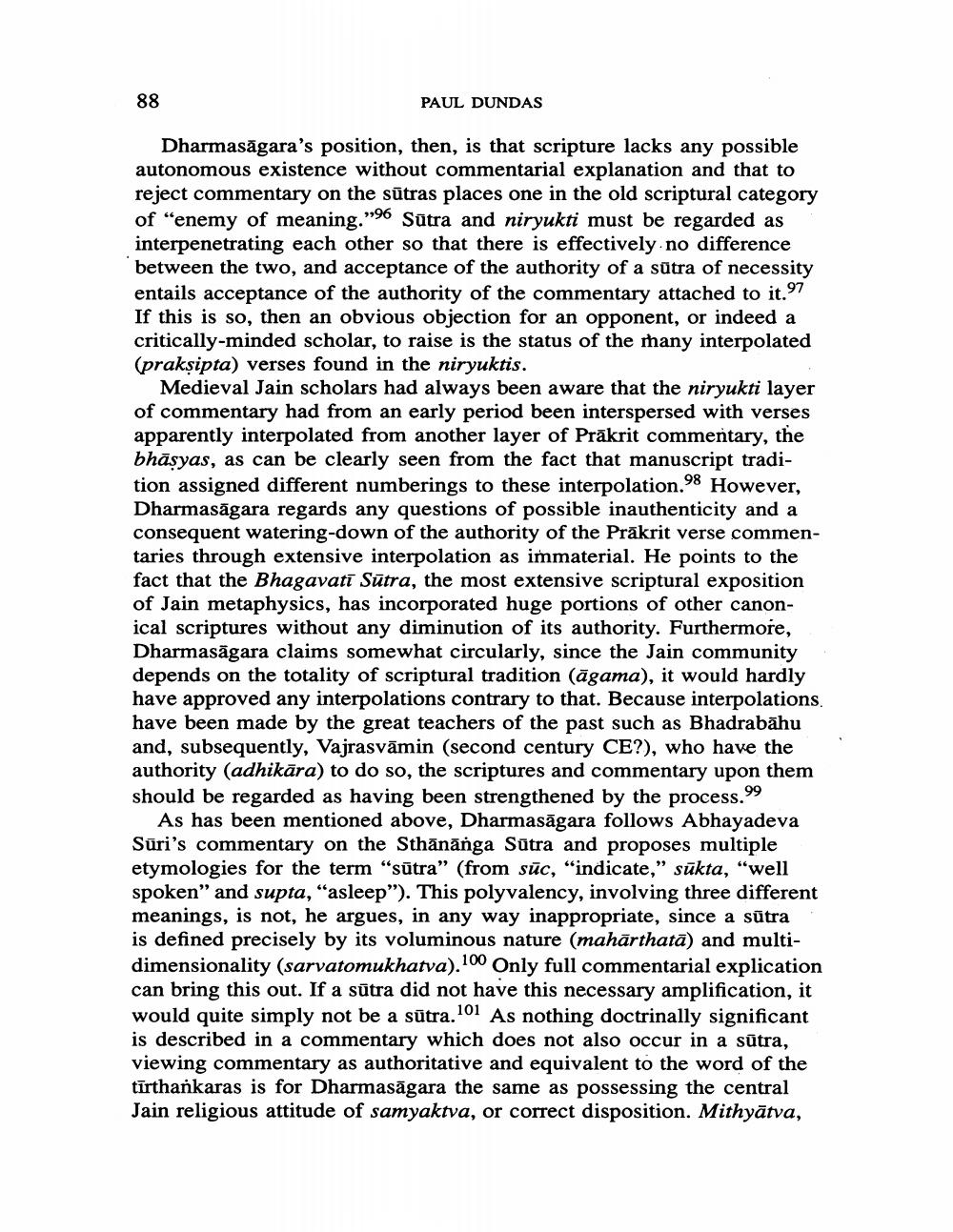________________
88
PAUL DUNDAS
Dharmasāgara's position, then, is that scripture lacks any possible autonomous existence without commentarial explanation and that to reject commentary on the sūtras places one in the old scriptural category of “enemy of meaning.”96 Sūtra and niryukti must be regarded as interpenetrating each other so that there is effectively no difference between the two, and acceptance of the authority of a sūtra of necessity entails acceptance of the authority of the commentary attached to it. 97 If this is so, then an obvious objection for an opponent, or indeed a critically-minded scholar, to raise is the status of the many interpolated (praksipta) verses found in the niryuktis.
Medieval Jain scholars had always been aware that the niryukti layer of commentary had from an early period been interspersed with verses apparently interpolated from another layer of Prākrit commentary, the bhāsyas, as can be clearly seen from the fact that manuscript tradition assigned different numberings to these interpolation.98 However, Dharmasāgara regards any questions of possible inauthenticity and a consequent watering-down of the authority of the Prākrit verse commentaries through extensive interpolation as immaterial. He points to the fact that the Bhagavati Sūtra, the most extensive scriptural exposition of Jain metaphysics, has incorporated huge portions of other canonical scriptures without any diminution of its authority. Furthermore, Dharmasāgara claims somewhat circularly, since the Jain community depends on the totality of scriptural tradition (āgama), it would hardly have approved any interpolations contrary to that. Because interpolations. have been made by the great teachers of the past such as Bhadrabāhu and, subsequently, Vajrasvāmin (second century CE?), who have the authority (adhikāra) to do so, the scriptures and commentary upon them should be regarded as having been strengthened by the process.99
As has been mentioned above, Dharmasāgara follows Abhayadeva Sūri's commentary on the Sthānānga Sūtra and proposes multiple etymologies for the term "sūtra" (from sūc, "indicate," sūkta, "well spoken" and supta, "asleep"). This polyvalency, involving three different meanings, is not, he argues, in any way inappropriate, since a sutra is defined precisely by its voluminous nature (mahārthatā) and multidimensionality (sarvatomukhatva) 100 Only full commentarial explication can bring this out. If a sūtra did not have this necessary amplification, it would quite simply not be a sūtra.101 As nothing doctrinally significant is described in a commentary which does not also occur in a sūtra, viewing commentary as authoritative and equivalent to the word of the tīrthankaras is for Dharmasāgara the same as possessing the central Jain religious attitude of samyaktva, or correct disposition. Mithyātva,




